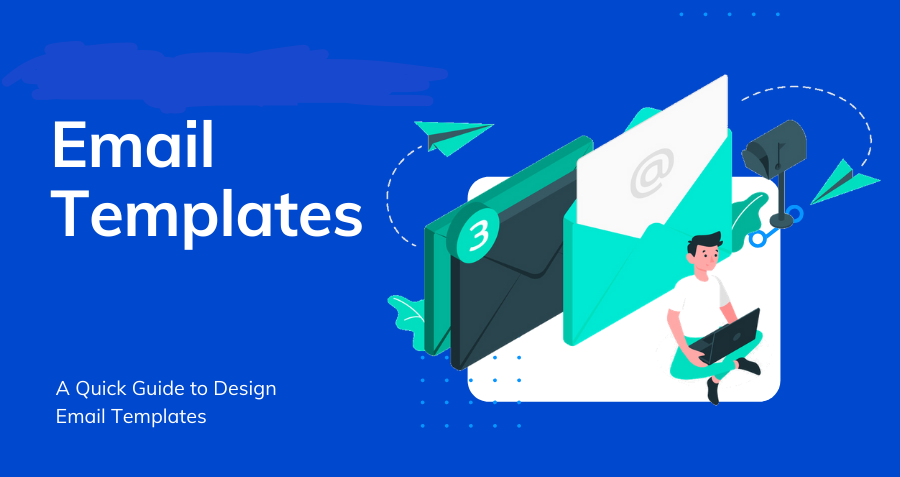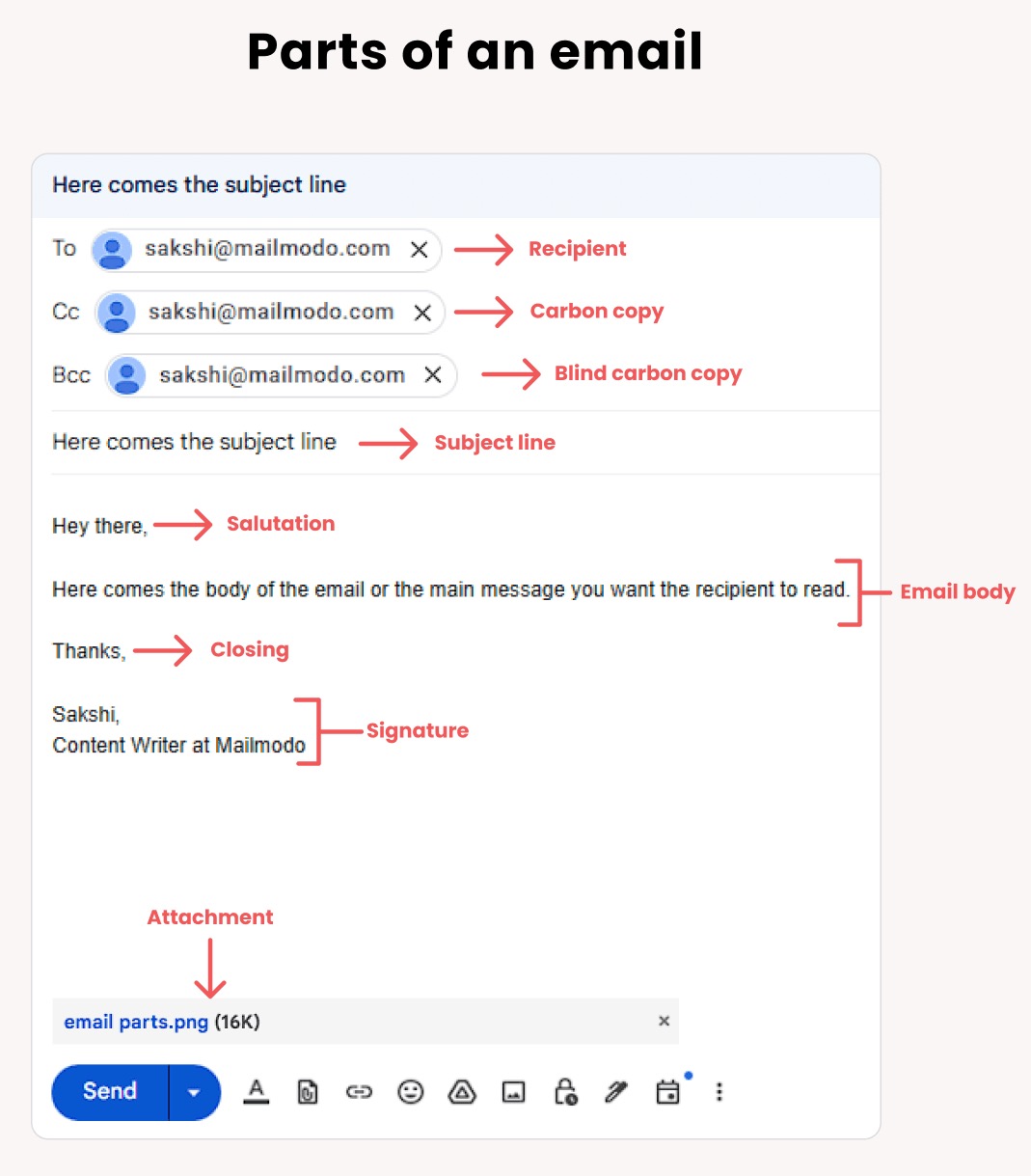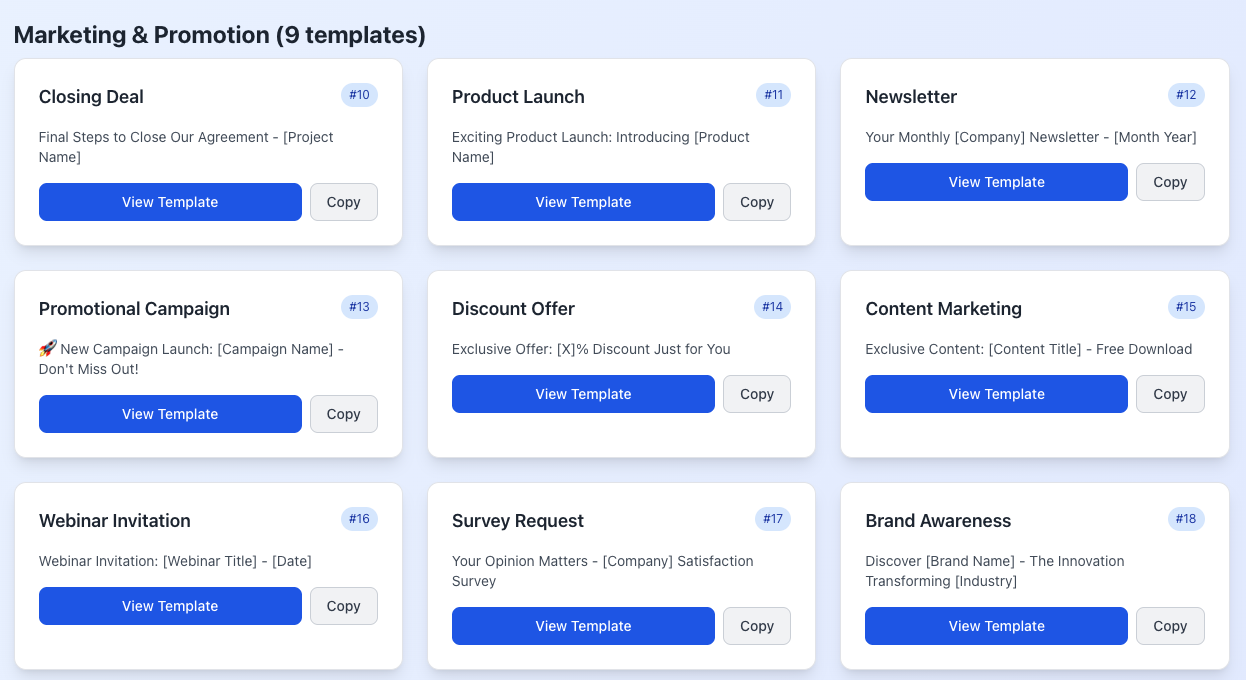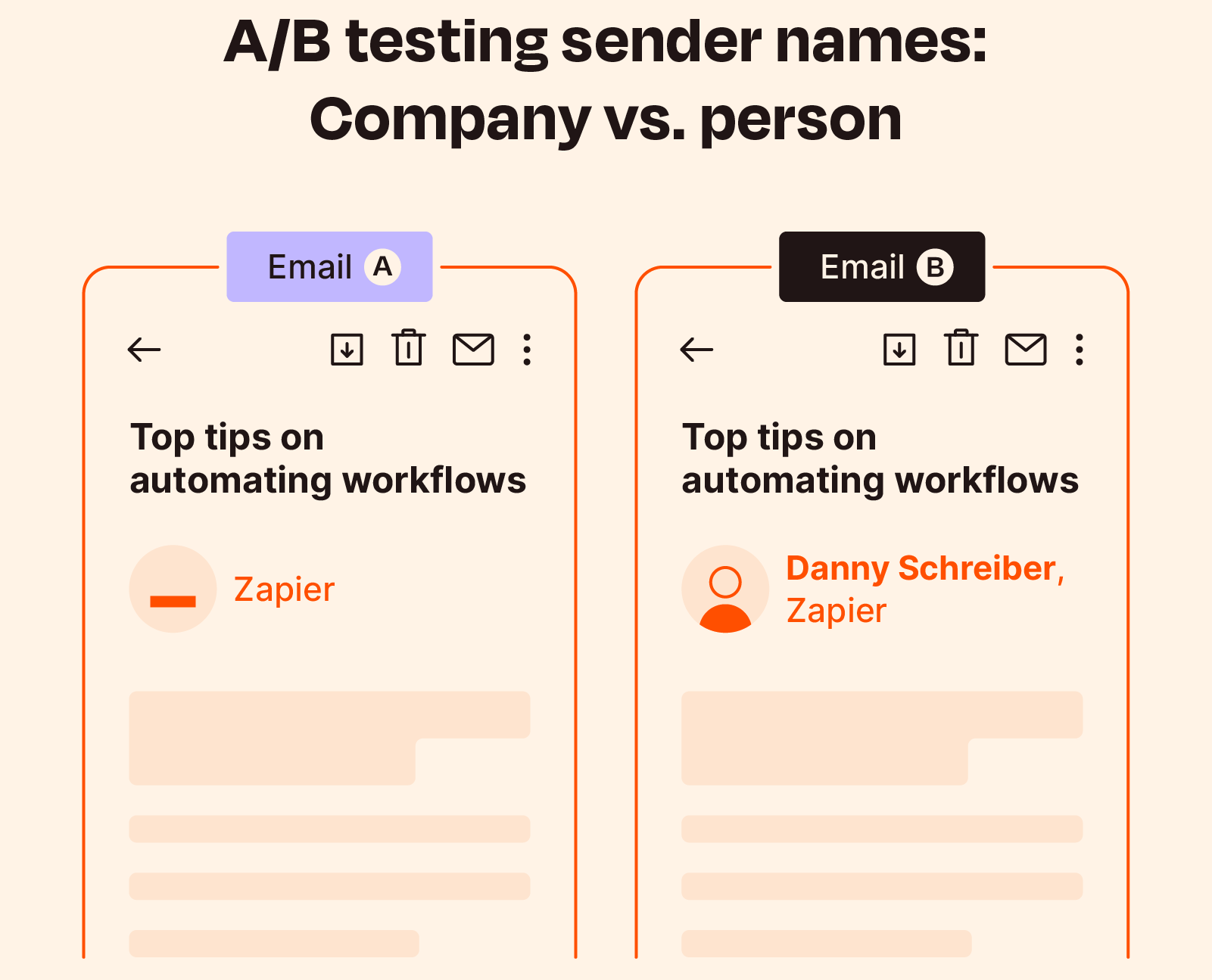Ultimate Guide to Email Templates: What You Need to Know and How to Create Them

Loading...

Email templates are essential tools for businesses and individuals looking to streamline their communication while maintaining consistency and professionalism. Whether you're sending sales pitches, marketing campaigns, or customer support messages, well-crafted templates can save time, increase engagement, and improve overall communication effectiveness.
Understanding email templates goes beyond simply copying and pasting pre-written text. Effective templates combine strategic messaging, compelling design, personalization opportunities, and clear calls-to-action that drive desired outcomes. Modern templates must work across various devices, email clients, and audiences while maintaining brand consistency and professional appearance.
This comprehensive guide explores everything you need to know about email templates, from basic concepts to advanced optimization strategies. We'll cover template creation, customization, best practices, and industry-specific applications that help businesses and professionals communicate more effectively through email marketing and correspondence.

Email templates serve as reusable frameworks for consistent, professional communication across various business functions. These pre-designed templates eliminate the need to write from scratch while ensuring message consistency, brand alignment, and time efficiency in your email communication strategy.
The strategic value of email templates extends beyond simple time savings. Well-designed templates improve response rates, reduce communication errors, maintain brand consistency, and enable better tracking and optimization of email performance. Professional templates also ensure compliance with company messaging standards and legal requirements.
Successful email templates incorporate several essential elements that maximize their effectiveness:
Subject Line Templates: Compelling subject lines that grab attention while accurately representing email content. Templates should include subject line variations that can be customized for different audiences and purposes.
Header Design: Professional headers that reinforce brand identity through logos, colors, and consistent formatting. Templates benefit from well-designed headers that establish credibility immediately upon opening.
Body Content Structure: Clear, scannable content organization with appropriate hierarchy, bullet points, and white space. Templates should guide readers through key messages systematically and logically.
Call-to-Action Elements: Prominent, action-oriented buttons or links that drive desired responses. Templates require strategically placed calls-to-action that stand out and encourage engagement.
Footer Information: Professional footers containing contact information, unsubscribe options, and legal compliance elements. Templates must include complete footer information for professionalism and regulatory compliance.

Different business scenarios require specialized email templates designed for specific communication goals and audience expectations. Understanding various template categories helps organizations choose appropriate solutions for their communication needs.
Sales email templates focus on lead generation, prospect nurturing, and conversion optimization. These templates balance persuasive messaging with relationship building to drive sales outcomes effectively.
Cold Outreach Templates: Initial contact email templates designed to introduce your business and generate interest from prospects. Cold outreach templates require careful personalization and value proposition presentation.
Follow-up Templates: Sequential email templates that maintain prospect engagement throughout the sales cycle. Follow-up templates should provide additional value while moving prospects toward purchasing decisions.
Proposal Templates: Formal email templates for presenting proposals, quotes, or detailed offerings. Proposal templates combine professional formatting with clear presentation of terms and next steps.
Closing Templates: Final-stage email templates designed to address objections and secure commitments. Closing templates should create urgency while addressing common concerns professionally.
Marketing email templates support broader audience engagement, brand awareness, and customer retention efforts. These email templates prioritize visual appeal, engagement metrics, and conversion tracking.
Newsletter Templates: Regular communication email templates that share updates, insights, and valuable content with subscribers. Newsletter email templates maintain consistent branding while delivering diverse content types.
Promotional Templates: Sales-focused email templates that highlight special offers, discounts, or limited-time opportunities. Promotional email templates create urgency while maintaining professional appearance and clear value propositions.
Welcome Series Templates: Onboarding email templates that introduce new subscribers to your brand and offerings. Welcome series email templates establish expectations while providing immediate value to new subscribers.
Re-engagement Templates: Specialized email templates designed to reconnect with inactive subscribers or customers. Re-engagement email templates use compelling messaging to revive dormant relationships.

Developing effective email templates requires strategic planning, thoughtful design, and continuous optimization based on performance data. Successful email templates combine compelling copywriting with user-friendly design and clear conversion pathways.
Mobile-First Approach: Design email templates with mobile devices as the primary consideration, ensuring optimal display across all screen sizes. Mobile-optimized email templates accommodate the majority of email opens occurring on mobile devices.
Brand Consistency: Maintain consistent visual identity through colors, fonts, logos, and messaging tone across all email templates. Brand-consistent email templates reinforce recognition and trust with recipients.
Scannable Layout: Structure email templates with clear hierarchy, appropriate white space, and logical content flow. Scannable email templates accommodate busy readers who quickly scan for relevant information.
Loading Speed: Optimize email templates for quick loading by minimizing image sizes and using efficient coding practices. Fast-loading email templates improve user experience and engagement rates.
Clear Value Proposition: Lead email templates with clear statements of value that immediately communicate benefits to recipients. Value-driven email templates capture attention and encourage continued reading.
Personalization Opportunities: Build email templates with designated areas for personalized content insertion. Personalized email templates significantly improve engagement and response rates.
Action-Oriented Language: Use compelling, action-oriented language that encourages desired responses. Action-focused email templates guide recipients toward specific outcomes effectively.
Social Proof Integration: Include testimonials, reviews, or case studies within email templates when appropriate. Social proof-enhanced email templates build credibility and trust with recipients.

Effective email templates balance standardization with customization opportunities that make messages feel personal and relevant to individual recipients. Advanced email templates incorporate dynamic content and segmentation strategies for maximum impact.
Merge Fields: Implement merge fields that automatically insert recipient names, company information, or other relevant data into email templates. Dynamic email templates feel more personal while maintaining efficiency.
Conditional Content: Use conditional logic to display different content blocks based on recipient characteristics or behaviors. Conditional email templates deliver more relevant messaging to diverse audience segments.
Behavioral Triggers: Design email templates that respond to specific recipient actions or engagement patterns. Behavior-triggered email templates provide timely, relevant communication that drives higher engagement.
Industry-Specific Templates: Create email templates tailored to different industry verticals or business types. Industry-specific email templates address unique pain points and use appropriate terminology.
Role-Based Customization: Develop email templates that speak directly to different job roles or decision-makers. Role-targeted email templates improve relevance and response rates significantly.
Lifecycle Stage Templates: Design email templates appropriate for different stages of the customer journey. Lifecycle-specific email templates deliver the right message at the optimal time for each recipient.

Successful email templates require ongoing optimization based on performance metrics, audience feedback, and industry best practices. Data-driven email template optimization improves engagement rates and business outcomes consistently.
Open Rates: Monitor how effectively email templates capture attention and encourage email opens. Optimized email templates achieve above-average open rates through compelling subject lines and sender recognition.
Click-Through Rates: Track how well email templates drive recipient engagement with your content and calls-to-action. High-performing email templates maintain strong click-through rates through clear value propositions and prominent calls-to-action.
Conversion Rates: Measure how effectively email templates drive desired actions beyond initial clicks. Conversion-optimized email templates guide recipients through complete desired actions efficiently.
Unsubscribe Rates: Monitor email templates for signs of audience fatigue or irrelevance through unsubscribe tracking. Well-designed email templates maintain low unsubscribe rates through valuable, relevant content.
Subject Line Testing: Compare different subject line approaches within your email templates to identify most effective options. Subject line optimization significantly impacts overall email template performance.
Content Variations: Test different messaging approaches, content lengths, and value propositions within email templates. Content testing reveals most effective communication strategies for your audience.
Design Elements: Experiment with different visual layouts, color schemes, and call-to-action designs in email templates. Design optimization improves user experience and engagement with email templates.
Send Time Optimization: Test different sending times and days for your email templates to maximize engagement. Timing optimization ensures email templates reach recipients when they're most likely to engage.

Looking for more email troubleshooting and management guidance? Check out these related articles:
Discover how AI email generators can revolutionize your business communication by saving time while improving engagement rates
📖 Guides
🤖 Ai
Discover how AI followup email generators can transform your outreach strategy, boost response rates, and save you hours of writing time. Compare the top ai followup email generators to find the perfect AI solution for your followup needs.
📖 Guides
🤖 Ai
Learn how email verification boosts deliverability, protects sender reputation, and saves marketing costs while improving ROI for your email campaigns
📖 Guides